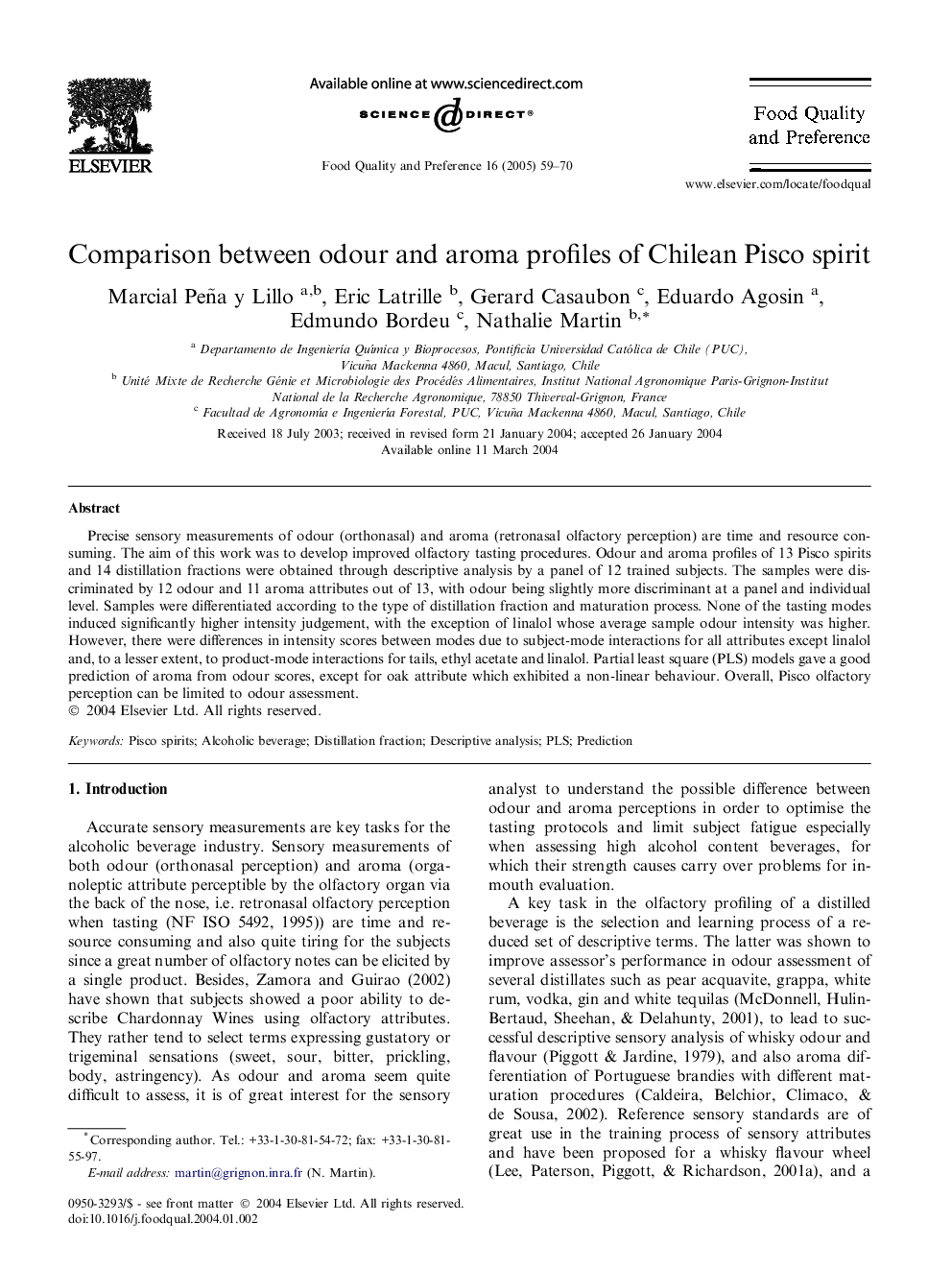| Article ID | Journal | Published Year | Pages | File Type |
|---|---|---|---|---|
| 9409043 | Food Quality and Preference | 2005 | 12 Pages |
Abstract
Precise sensory measurements of odour (orthonasal) and aroma (retronasal olfactory perception) are time and resource consuming. The aim of this work was to develop improved olfactory tasting procedures. Odour and aroma profiles of 13 Pisco spirits and 14 distillation fractions were obtained through descriptive analysis by a panel of 12 trained subjects. The samples were discriminated by 12 odour and 11 aroma attributes out of 13, with odour being slightly more discriminant at a panel and individual level. Samples were differentiated according to the type of distillation fraction and maturation process. None of the tasting modes induced significantly higher intensity judgement, with the exception of linalol whose average sample odour intensity was higher. However, there were differences in intensity scores between modes due to subject-mode interactions for all attributes except linalol and, to a lesser extent, to product-mode interactions for tails, ethyl acetate and linalol. Partial least square (PLS) models gave a good prediction of aroma from odour scores, except for oak attribute which exhibited a non-linear behaviour. Overall, Pisco olfactory perception can be limited to odour assessment.
Related Topics
Life Sciences
Agricultural and Biological Sciences
Food Science
Authors
Marcial Peña y Lillo, Eric Latrille, Gerard Casaubon, Eduardo Agosin, Edmundo Bordeu, Nathalie Martin,
